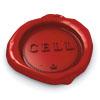In 2013 CELL was one of two finalists to win the Open Humanities Award to fund a new project entitled Joined-Up Early Modern Diplomacy: Linked Data from the Correspondence of Thomas Bodley. We have used the dataset generated by the Diplomatic Correspondence of Thomas Bodley project to produce visualizations of the people and geographical locations mentioned in the letters.
You can download our final report as a PDF here.
New users, mining our own data
While the network of correspondents is relatively small, the nature of the correspondence – describing events unfolding in Western Europe over nearly a decade – means that the tagged references to people and places are numerous and form a generous dataset. The Diplomatic Correspondence project indexes these references for browsing. Moreover, these references are an ideal dataset to link visually, combining the epistolary relationship between correspondents with the physical journey of the letters, which themselves create a ‘material’ link or trace between the nodes. A central feature of the project is to interrogate the existing data in such a way that they might produce patterns and behaviours by Bodley and his correspondents which are imperceptible when tabulated textually.
We made a decision early in the development for the Diplomatic Correspondence to enhance the scope of the project, improve browsing potential and widen access to other constituencies. To enrich our metadata, we tagged in XML every mention of a person or a geographical location in the corpus.
This task proved to be a significant addition to the schedule, as many mentions of people and places were not straightforward tags to execute. The frequently obscure people, or obsolete names of geographical locations, required a hybrid approach of research techniques (often resorting to the databases available through the Institute for Historical Research, Google Maps, and Wikipedia). Yet the results of this extra tagging are such that – when the website was initially launched – the two extra indexes yielded alternative pathways through the correspondence. Now, results of that XML tagging permit the repurposing of the dataset to create a visual route through the epistolary remains of Bodley’s extensive letter-writing activity.
The growth of digital humanities and the culture of sharing through Open Data/Open Source mean that extracting data from textual and other material and presenting it digitally is becoming more commonplace. The visualization of data opens up new and exciting routes of enquiry and is a useful analytical tool, yet the process demands a robust critical methodology and rigorous approach. This project explores the process of creating visualization networks: the method; the technical requirements; the data; the aesthetic concerns, and our conclusions.
